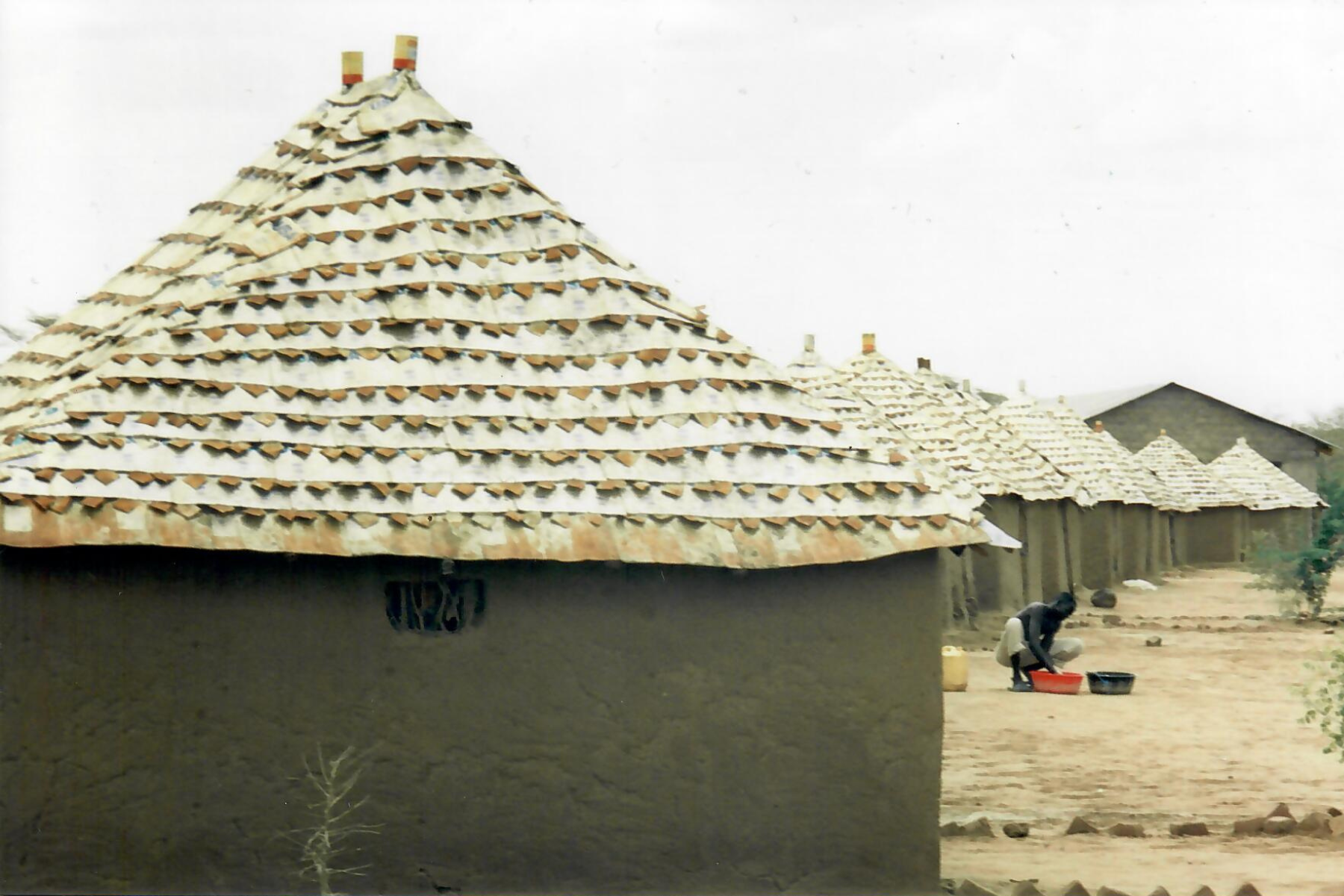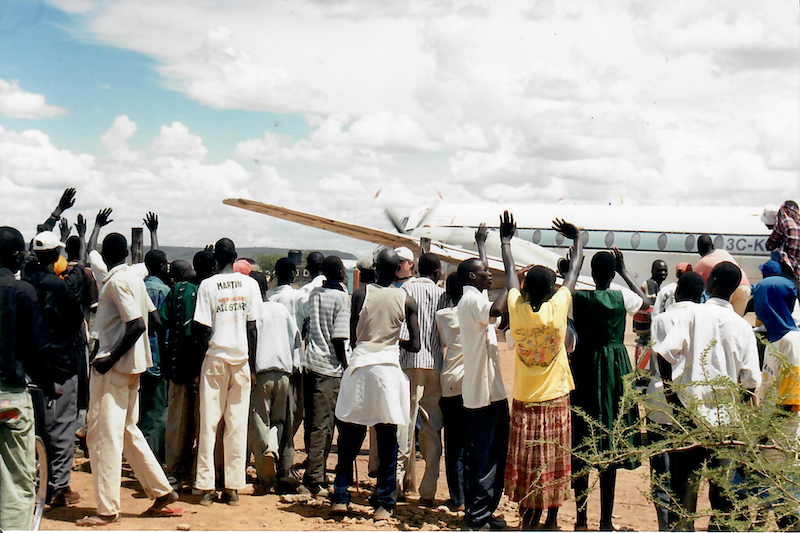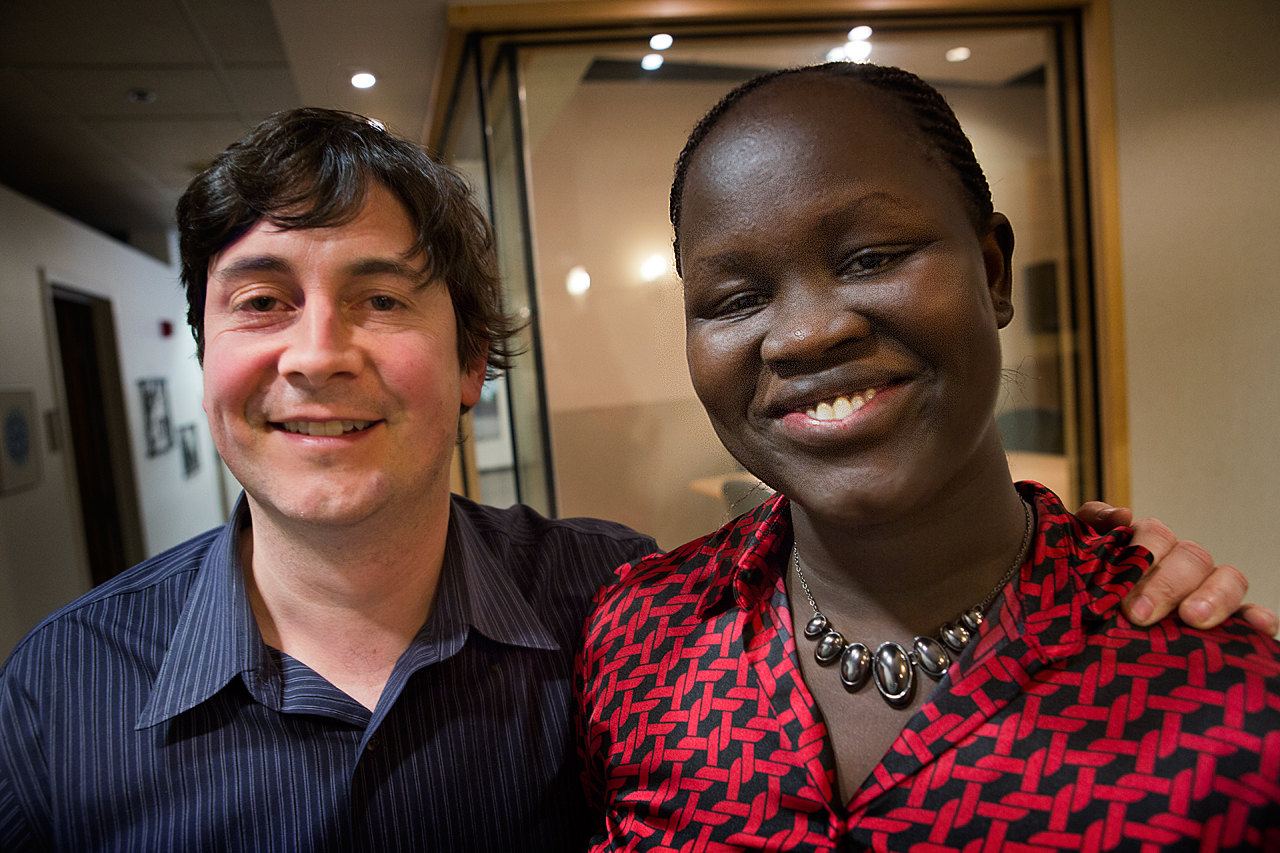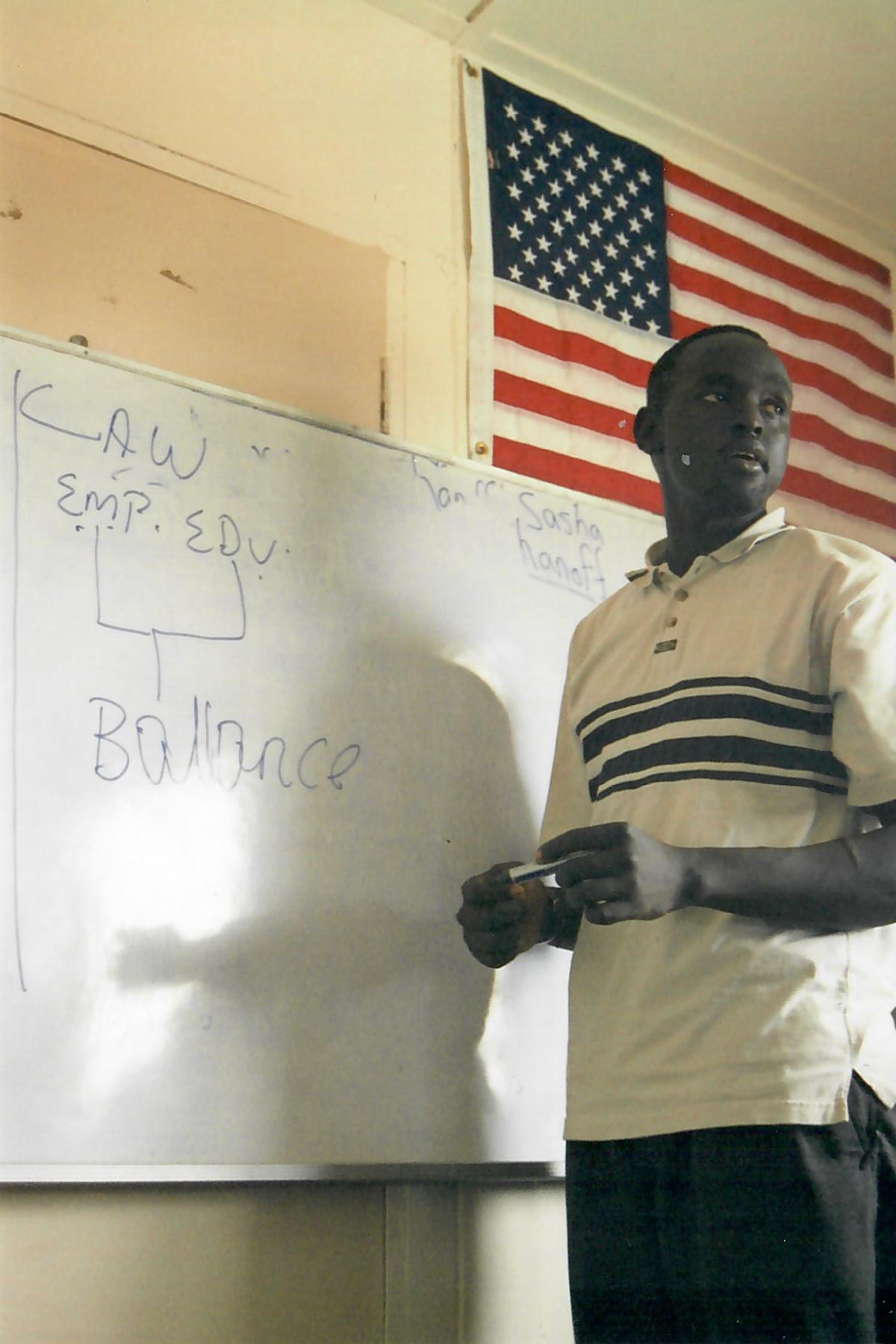In the mid 1980s civil war erupted in Sudan. Government-backed militias launched brutal attacks on villages in southern Sudan, killing numerous civilians. Thousands of young boys survived these attacks, as many had been working in cattle camps away from their homes when the violence erupted.
With no ability to return to their villages, they were left with no choice but to run for their lives.
Many of the boys initially walked hundreds of miles in an attempt to reach safety in Ethiopia. At times they met other families that were also fleeing. Their trek took them across harsh terrains—deserts, forests, and rivers—all while facing starvation, disease, kidnappings, and attacks by wild animals and militias. They finally arrived in Ethiopia where they stayed until the Ethiopian government changed. The new regime had aligned itself with the Sudanese government and was hostile toward the South Sudanese refugees. Ethiopian militias then attacked the boys’ camps.
Forced to flee Ethiopia, the Lost Boys found themselves facing the swollen, crocodile-infested Gilo River. Some drowned attempting to cross, while others were shot at by the pursuing militias. Safety had eluded them once more, so they walked on.
The Lost Boys then journeyed to Kenya, where they would—finally—find refuge at Kenya’s Kakuma Refugee Camp. By the time they reached Kakuma, some boys had walked up to 1,000 miles, over several years, in an attempt to reach safety.
The journey was fraught with danger. Some children were kidnapped, while others succumbed to dehydration, starvation, or exhaustion, lying down and never getting up again. Lions and other predators claimed the lives of many children.
Eventually, in the early 1990s, those who survived the journey made their way to the Kakuma Refugee Camp in Kenya. The camp, initially established to house the Lost Boys, became their new home, and it was here that they began to rebuild their lives.
In Kakuma, the Lost Boys organized themselves into small communities, building their own one-room mud huts and electing leaders to oversee the well-being of their groups. Education became a crucial lifeline for the Lost Boys, who recognized it as their “mother and father” in the absence of their own families.
 A row of huts where the Lost Boys lived in Kakuma Refugee Camp. Four or five boys lived in each hut. Photo: Sasha Chanoff, 2001.
A row of huts where the Lost Boys lived in Kakuma Refugee Camp. Four or five boys lived in each hut. Photo: Sasha Chanoff, 2001.
The Lost Boys’ story captured the attention of the international community, and in 2000, the U.S. government initiated a resettlement program to resettle them to the U.S. Over the next year, approximately 3,600 Lost Boys and 89 Lost Girls were welcomed into communities across the United States, making this the largest resettlement of its kind in American history.

Refugees at Kakuma Refugee Camp wave to a transport plane, which brought thousands of Lost Boys and Girls to the U.S. Photo: Sasha Chanoff, 2001.
Upon arrival in the U.S., these young men and women faced the daunting task of adjusting to a new culture and way of life. Despite the challenges, many thrived, pursuing education and careers while also becoming advocates for their communities back home in South Sudan. Some even established nonprofits to support others who had faced similar hardships.
The Lost Boys’ success in the U.S. is due in part to the volunteers who came together to help the newcomers find their way in America. Some of the volunteer groups grew into non-profit organizations such as South Sudanese Enrichment for Families and The Lost Boys Center. Other non-profits were founded by Lost Boys themselves to serve their communities back home, such as the Valentino Achak Deng Foundation (VAD) and the John Dau Foundation.
Although women and girls were kidnapped during the militia attacks in South Sudan, many also survived the perilous trip to Kenya, though their numbers were significantly lower. In keeping with South Sudanese culture, when they reached Kakuma, unaccompanied girls were typically fostered into families for protection; therefore, they were not on the resettlement lists of unaccompanied boys that were used. Also, many of these unaccompanied girls were sold into marriage by their foster families at a young age in order for the families to gain resources. There were many girls and young women who shared the same story as the Lost Boys but were overlooked in the resettlement.
 Sasha Chanoff with Yar Ayuel, one of the 89 “Lost Girls” to resettle to the U.S. in 2000-2001. Photo: Sasha Chanoff, 2013
Sasha Chanoff with Yar Ayuel, one of the 89 “Lost Girls” to resettle to the U.S. in 2000-2001. Photo: Sasha Chanoff, 2013
It was in Kakuma Refugee Camp that Sasha Chanoff, who would later go on to found RefugePoint, met many of the Lost Boys and Girls of Sudan. Chanoff, who worked in the camp as a Cultural Orientation Instructor, spent hundreds of hours getting to know the Lost Boys and Girls both in and out of the classroom at the camp.
Sasha Chanoff’s experiences with the Lost Boys and Girls in Kakuma were instrumental in the founding of RefugePoint. Witnessing the immense challenges faced by these young refugees, particularly the girls who were overlooked and at risk of being sold into marriage, Chanoff was driven to take action. He wanted to ensure that these overlooked children and young adults, both in Kakuma and in Nairobi, had the opportunity for resettlement and a chance at a better life.
RefugePoint was born out of this commitment to protecting the most vulnerable refugees. Since its founding in 2005, RefugePoint has expanded its mission to support refugees worldwide, partnering with refugees to access life-changing solutions like resettlement and other pathways to safety.
 Cultural orientation classes at Kakuma Refugee Camp prepared the Lost Boys and Girls for life in the U.S., teaching them how to find work, save money, and more. Photo: Sasha Chanoff, RefugePoint, 2001
Cultural orientation classes at Kakuma Refugee Camp prepared the Lost Boys and Girls for life in the U.S., teaching them how to find work, save money, and more. Photo: Sasha Chanoff, RefugePoint, 2001
Many Lost Boys and Girls have continued to build their lives in the U.S., living out their own version of the American dream. Some have returned to what is now the country of South Sudan to help their families and communities amid the ongoing devastation there.
The story of the Lost Boys was captured and retold many times in books and films, including this 60 Minutes piece (featuring RefugePoint Founder and CEO Sasha Chanoff), the Warner Bros film The Good Lie starring Reese Witherspoon, and in the novel What is the What by Dave Eggers, among many others.
The story of the Lost Boys of Sudan highlights an urgent need to support refugees facing extreme vulnerabilities. Worldwide, millions of people have been displaced due to war, conflict, persecution, and human rights violations. While many humanitarian organizations provide aid to help people survive, most do not focus on lasting solutions, leaving refugees stuck in limbo with few opportunities to find long-term safety and rebuild their lives. In addition, humanitarian response systems often fail to adequately serve women, children, those from LGBTQ+ communities, persons with disabilities, and others who are particularly vulnerable.
RefugePoint creates access to lasting solutions for refugees so that they can live in safety and achieve social and economic stability. By focusing on refugee populations who are chronically underserved by larger aid systems, RefugePoint is able to make a unique impact in the refugee response system: we have directly helped over 140,000 refugees access pathways to relocate to safety since our founding.
Refugees around the world need our help. Here are a few ways to get involved:
Financial Support: As a nonprofit organization, RefugePoint depends on your financial support to operate. Join our community to deliver lasting solutions for refugees and help them to build secure, new lives.
Donate Your Time: While RefugePoint does not provide services to individuals in the U.S., there are many organizations that do this important work. For example, as part of the new U.S. volunteer-based Welcome Corps, Americans can now formally band together to help newcomer refugees assimilate into American life.
Use Your Voice: Find RefugePoint and other refugee-serving organizations on social media and interact with their posts. Liking, commenting, and sharing our content helps amplify our voices and our impact.
Stay in the know about our work with refugees: get refugee stories, events, RefugePoint news, and more delivered right to your inbox.
By subscribing you agree to with our Privacy Policy & provide consent to receive updates from Refuge Point.
Notifications